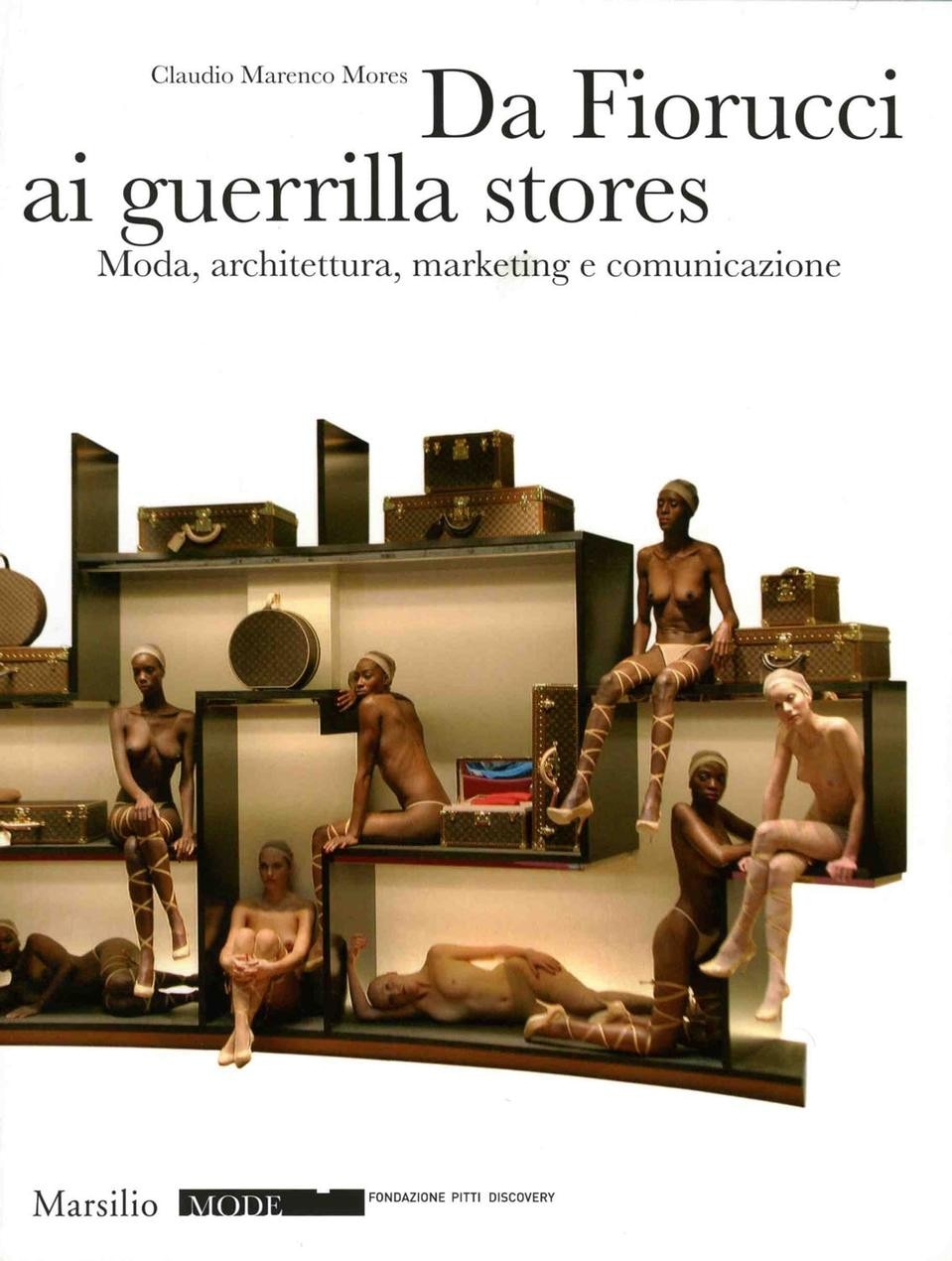Da Fiorucci ai Guerrilla stores. Moda, architettura, marketing e comunicazione
Claudio Marenco Mores, Marsilio, Venezia 2006 (pp. 176, € 16,00)
In The Consumer Society, Jean Baudrillard analysed consumerism as a communication process that transforms objects into symbols, stating: “Medieval society hovered between God and the Devil; ours sits midway between consumerism and its condemnation.” Claudio Marenco Mores’s fine book begins with the idea that shopping has become the activity that most defines public life. Because of this trend in the global market economy, a few decades ago the fashion- star system realised the importance of expressing a personal aesthetic vision in more than one direction in order to develop a single recognisable image. The book addresses the relationship between fashion and architecture and how the latter has played an increasingly important role in the localisation of brands or products in the imagination of the average consumer. Architects of the calibre of Norman Foster, Rem Koolhaas, Renzo Piano, Frank Gehry and Claudio Silvestrin have designed the shop concepts of Esprit, Prada, Hermès, Issey Miyake and Giorgio Armani, respectively. In such cases, the designerclient dynamic harks back to the idea of the Renaissance clientele, in that the mechanism adopted to represent something ephemeral and intangible is made physical by tangible forms and surroundings.
A long chapter is devoted to Fiorucci, who was one of the first to realise the media power of hybrid languages. His was the forerunner of all the shops discussed in the book. When he opened his first shop in Milan, in May 1967, this fashion designer institutionalised the lifestyle concept, in his words “countering authority and boredom”. A few years later he opened what would today be described as a post-modern shop, grouping together a shop, a vintage market, a restaurant and a theatre under one roof. In 1984 he invited Keith Haring to turn the shop in Galleria Passarella into an impromptu work of art, covering walls and furniture with graffiti. A few years earlier, Andy Warhol had launched his famous Interview magazine in the New York Fiorucci store. The Fiorucci shops/galleries promoted a culture of combination, creativity and play, and on several occasions became the venues for performances such as Arredo Vestitivo by Alessandro Mendini and Studio Alchimia in the windows of the Milan shop in 1982.
An interesting part of the book focuses on Rei Kawakubo, the brain behind Comme des Garçons, who, in addition to traditional shops, started opening the so-called “guerrilla stores” in 2004. These crude shops were situated away from the shopping thoroughfares, remaining open for a year and then closing, whether sales were good or bad. The only way to discover their location is to visit the website www.guerrilla-store.com, where a grainy blackand- white picture of a run-down interior contains a list of the shops around the world. Shopping has become an event in these temporary stores, if you are lucky enough to happen upon them, and you can purchase a limited-edition piece before the store disappears or is turned into something else. You could call it a sort of Dada shopping.
Despite the calibre of the designers, the large capital investments and the experimental forms and materials – which are often subsequently transferred to “serious” designs – much of the academic world attributes no cultural significance to contemporary architecture’s constructions, branding them as superficial. The presumed frivolity of the contents was also attributed to the receptacle, and a fashion design was defined as fashionable, with a totally negative connotation. It is a complex issue, but the traditional notion of architecture that provides shelter no longer suffices. Today, a piece of architecture serves other functions. In a world in which knowledge travels fast and via networks, architects must manage multiple skills, adding value to the project and satisfying the users’ changing tastes.


